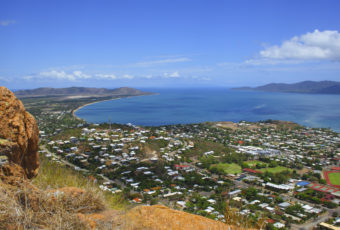Sydney Veterinary School wants to improve the survival of orphaned Australian wildlife
Have you ever wondered what happens to Australia’s orphaned animals when they are finally re-released into the wild? How successfully do they manage to fend for themselves without the help of their mothers to guide them? And can we do something to dramatically increase their chances of survival?

The answer is yes.
Each year, thousands of baby marsupials are left orphaned as a result of injury or death to their mothers. In the 1990s it was estimated that more than 14,000 animals each year were taken into care in New South Wales and Victoria alone. The nationwide figures in 2014 are likely to be staggering; however, this data is not readily accessible, and as a result, the sheer size of this issue is often ignored. The care of orphaned marsupials is almost exclusively conducted by a dedicated group of volunteers who are licensed by State Government wildlife management agencies. Researchers in the Sydney Faculty of Veterinary Science have estimated that these volunteers spend an average of 34 hours and $185 per week caring for these orphans.
Despite this significant personal investment, the long-term fate of these orphans remains largely unknown. The key reason for this is the lack of resources to adequately monitor the fate of rehabilitated animals post-release. This research will significantly increase understanding of the impact of different hand-rearing and release strategies on the survival of orphaned marsupials after release. This information will assist in developing optimum strategies that will decrease the risks associated with releasing hand-reared animals into the wild.
Dr Catherine Herbert from the Sydney Faculty of Veterinary Science is passionate about providing better support for wildlife carers. Dr Herbert feels that it is important that carers are given the appropriate tools to ensure that their investment produces the best possible welfare outcomes for these vulnerable animals. The overall aim of the proposed project is to develop a “toolkit” that will help wildlife carers to identify the best care strategies for orphaned wildlife.
The first step in developing this toolkit is to evaluate which models of care best meet the needs of this vulnerable group of animals. More specifically, this project will evaluate the fate of orphaned marsupials post-release to determine whether specific aspects of the hand-rearing and release process influence survival rates.
The Sydney Veterinary Science researcher will do this by fitting groups of hand-reared animals with state-of-the-art global positioning system (GPS) transponders that will log the time and location of individual animals at 10-minute intervals after release. Their movement patterns, health, reproductive status and survival will be compared to a group of wild, mother-reared animals over a period of at least 12 to 18 months.
Dr Herbert and her team will initially study two marsupial species with differing life-history strategies: the brush-tail possum, a solitary, small- to medium-sized arboreal marsupial; and the eastern grey kangaroo, a large, social, terrestrial marsupial. This will allow them to determine whether a one-size-fits-all approach is likely to be successful, or whether tailor-made hand-rearing strategies need to be implemented on a species-by-species case.
There is little doubt that funding for this project would provide significant benefits to wildlife carers, enabling them to employ hand-rearing practices with the confidence of knowing they have been critically evaluated. This will offer these orphans the best chance of survival. The potential of this research to inform government policy cannot be understated. While legislative guidelines currently exist for the care of orphaned marsupials, there is little evidence underpinning them. This research will provide a strong evidence base to inform and influence State Government wildlife management agencies, therefore influencing policy, and ensuring that there is broad-scale uptake of the outcomes of this research.
About the Sydney Veterinary School
The Sydney DVM is an exciting new graduate entry veterinary program, commencing in 2015. The DVM replaces the Sydney Veterinary School’s existing Bachelor of Veterinary Science, and is open to applicants with a completed Bachelor’s degree who wish to study veterinary medicine in a postgraduate learning environment. The program is internationally recognised and accredited so graduates can work around the world.
The Sydney Faculty of Veterinary Science has a strong commitment to provide students with an exceptional learning environment. This ensures the very best start to a fulfilling, diverse and successful veterinary career.
Sydney Veterinary School’s aim is to ensure students are able to view issues from a population health framework, with a strong animal welfare consciousness, and provide influence and expertise at a local, national and global level.
Program title: Doctor of Veterinary Medicine (DVM)
Location: Sydney, New South Wales
Semester intake: March 2015
Program duration: 4 years
Application deadline: TBC by the faculty. In previous years, the application deadline for the vet science program was Oct. 31.
Apply to the Sydney Veterinary School!
*

































Ask A Question
Ask us about your program of interest, or if you have a question about our services.
CONTACT US TODAY